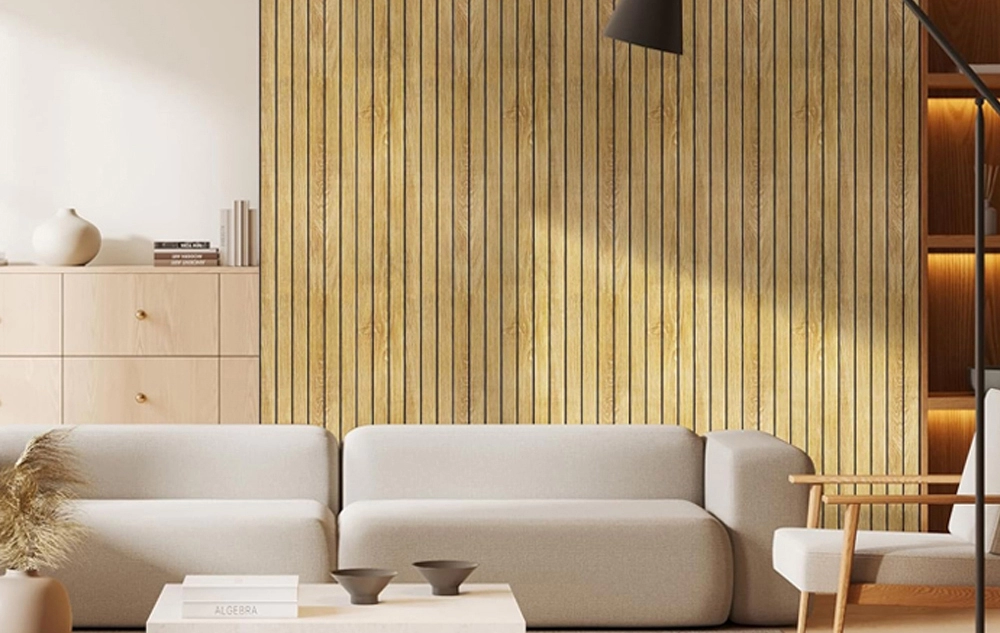In today's increasingly noisy world, creating a quiet and peaceful bedroom is not just a luxury-it's a necessity. Whether you live in a bustling city apartment or a suburban home near a busy street, unwanted sounds can easily disturb your sleep and relaxation. While traditional acoustic panels help manage echo and reduce noise, more homeowners are now turning toward eco-friendly bedroom acoustic panels-sustainable sound solutions that offer both acoustic comfort and environmental responsibility.
This article explores everything you need to know about eco-friendly acoustic panels for bedrooms: how they work, what materials they use, why they're sustainable, and how to choose and install them effectively.
1. Understanding Bedroom Acoustic Panels
Before diving into eco-friendly options, it's essential to understand what acoustic panels do.
Bedroom acoustic panels are specialized wall or ceiling coverings designed to absorb sound waves and reduce echo or reverberation. Instead of reflecting sound back into the room, they trap and dissipate it, creating a calmer acoustic environment.
These panels are especially beneficial in bedrooms, where noise can disrupt rest. Whether the sound comes from traffic, neighbors, or your own entertainment devices, acoustic panels help maintain a quieter and more soothing space.
2. Why Choose Eco-Friendly Acoustic Panels?
Traditional acoustic panels are often made from polyurethane foam or fiberglass, both of which can be environmentally damaging. They rely on petroleum-based materials, produce volatile organic compounds (VOCs), and are difficult to recycle after use.
In contrast, eco-friendly acoustic panels focus on sustainability at every stage-from material sourcing to production and disposal. Here are the main reasons eco-conscious homeowners are switching to sustainable acoustic solutions:
(1) Renewable and Recycled Materials
Eco acoustic panels are often made from natural fibers such as wool, hemp, jute, bamboo, or recycled PET bottles. These materials have strong sound absorption properties while minimizing carbon footprint.
(2) Low VOC Emissions
Sustainable panels use non-toxic adhesives, dyes, and finishes, ensuring better indoor air quality-particularly important for bedrooms where people spend 6–8 hours daily.
(3) Energy Efficiency
Some eco-acoustic materials provide additional thermal insulation, helping stabilize room temperature and reduce energy consumption for heating and cooling.
(4) End-of-Life Recyclability
Unlike foam panels that end up in landfills, many eco-friendly panels can be recycled or biodegraded, aligning with a circular economy approach.

3. Common Eco-Friendly Materials for Acoustic Panels
Let's take a closer look at some of the most popular materials used in sustainable bedroom acoustic panels today:
1. Recycled PET (Polyethylene Terephthalate)
Derived from recycled plastic bottles, PET acoustic panels are lightweight, durable, and available in various textures and colors. They are non-toxic, moisture-resistant, and can be fully recycled after use.
2. Natural Wool
Wool is a renewable and biodegradable material that offers excellent acoustic absorption. It regulates humidity and temperature naturally, making it ideal for bedrooms.
3. Bamboo Fiber
Fast-growing and highly renewable, bamboo provides a stylish and sustainable solution. Bamboo panels combine modern design with strong acoustic performance.
4. Cork
Cork panels come from the bark of cork oak trees, which regenerate naturally. They are antimicrobial, hypoallergenic, and provide both sound and thermal insulation.
5. Recycled Cotton or Denim
Old textiles are repurposed into thick acoustic layers that dampen noise effectively. These soft-fiber panels are perfect for home interiors, adding warmth and sustainability to bedroom decor.
4. Acoustic Performance: How Eco Panels Compare
Many people worry that choosing eco-friendly materials means compromising on performance that's not the case.
Modern eco-friendly acoustic panels are engineered to perform just as well as traditional ones. Depending on their material and density, they can achieve Noise Reduction Coefficient (NRC) ratings between 0.75 and 1.0, which means they absorb up to 100% of sound waves at certain frequencies.
In bedrooms, where comfort and tranquility are priorities, panels with NRC ratings above 0.8 are ideal. They can significantly reduce the sharpness of echoes and background noise, creating a serene environment for rest.
5. Design and Aesthetic Integration
Eco-friendly bedroom acoustic panels are not just about function-they can also be an essential part of your room's design. Manufacturers now offer sustainable panels in a variety of colors, textures, and geometric patterns, allowing homeowners to personalize their spaces without sacrificing environmental ethics.
Here are a few creative ways to integrate eco panels into your bedroom design:
-
Feature Wall: Use colored panels as a statement wall behind the bed.
-
Ceiling Installation: Mount panels on the ceiling to absorb upward sound reflections.
-
Framed Artwork Style: Choose decorative acoustic panels designed like wall art for a modern aesthetic.
-
Headboard Integration: Combine acoustic performance with furniture by using upholstered panels as a headboard.
The result is a stylish, functional, and environmentally friendly space that promotes rest and well-being.
6. Installation Tips for Maximum Effectiveness
Installing eco-friendly bedroom
https://www.roydaacoustic.com/news/eco-friendly-bedroom-acoustic-panels-sustainable-sound-solutions.
roydaacoustic
Average Rating